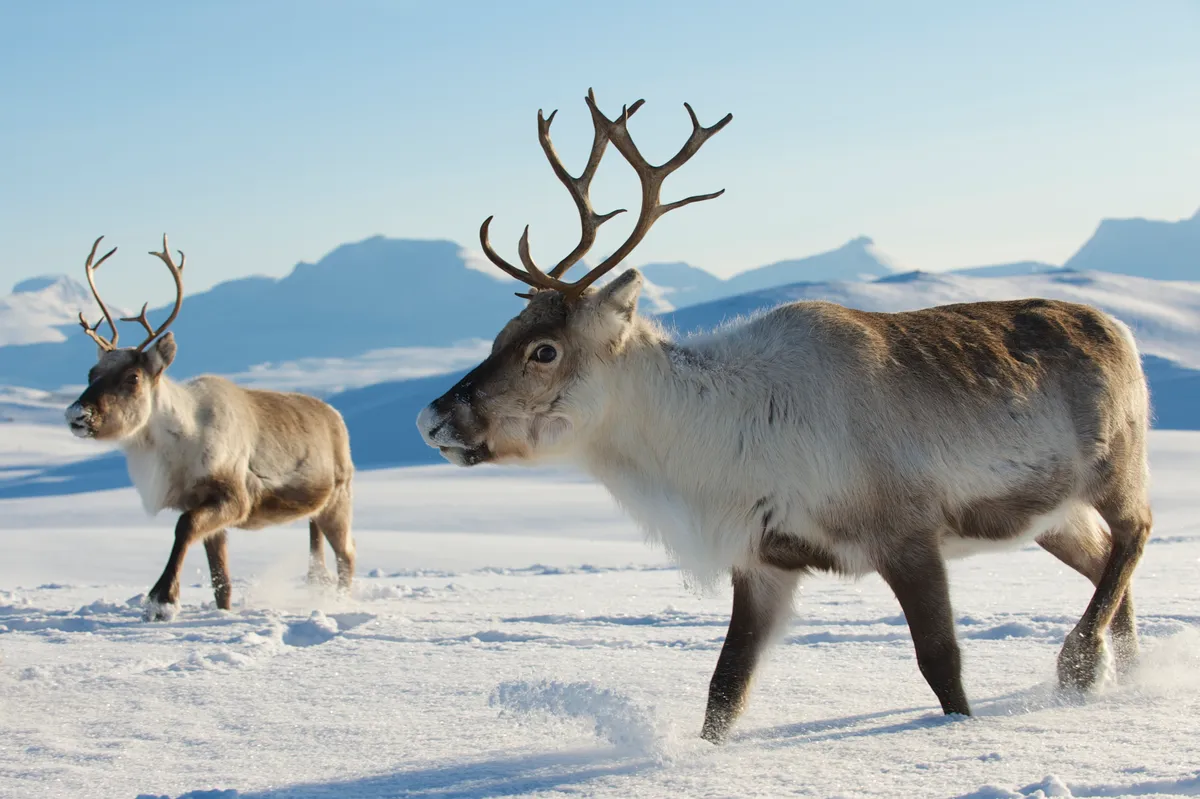Known as caribou in North America, reindeer live in very cold regions such as Alaska and Scandinavia. They can also be found in Scotland following a reintroduction in the Cairngorms. With temperatures frequently reaching below zero and snowy, icy ground, how have reindeer adapted to be able to live, thrive and survive in the extreme cold?
How reindeers cope with cold
1
Antlers
Whilst cattle horns have living tissue in the core, the antlers of reindeer are made of dead tissue and are regularly shed. Reindeer antlers are among the largest of any deer species, and unusually they are present on both males and females.
In male reindeer, new ones start growing in February; in females, May. Males shed theirs by December; females reindeers retain their antlers over winter, losing them after calving in spring.
2
Eyes
To cope with the long dark winters of the Arctic and enhance their vision, reindeers’ eyes are very sensitive to ultraviolet light.

3
Nose
As well as being furry, the nose has an internal heat-exchange system. This means that each breath is warmed on its way to the lungs, and cooled as it is exhaled so that water vapour is condensed before it can be puffed into the air.
4
Coat
There are two layers of fur consisting of an ultra-fine and dense underfur, and a shaggy outer layer. The outer hairs are hollow and provide insulation, similar to the fur of a polar bear.
5
Tendons
The tendons in the foot joint click as a reindeer walks. These sounds help herds stay together in low visibility and may even play a role in reinforcing social hierarchies.
6
Feet
Large feet with two toes and two large dew claws, which spread to distribute the body weight and provide grip. In snow, reindeer use their hooves in a technique called cratering to dig through the snow and find food beneath.
How to see Britain's only free-roaming herd of reindeer
The Cairngorm Reindeer Herd visitor centre at Glenmore is open most of the year, closing from late January to the February half term.